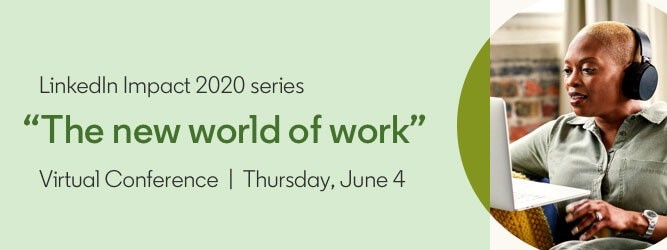LinkedIn's Head of TA Shares How Recruiting Teams Can Effectively Navigate Economic Downturns
In 2010, Harvard Business Review published research that examined how companies fared in the aftermath of the 2008 financial crash. And the results may come as a surprise: The companies that cut costs fastest and deepest were less likely to succeed in the long run than those that struck the right balance between investing and streamlining.
For Brendan Browne, LinkedIn’s VP of global talent acquisition, these findings are a great lesson for both business leaders and talent professionals. Even when times are challenging, there can be opportunities to take a step back and rethink investments and costs. And while there is no playbook for this current moment, we can look back on previous periods of economic uncertainty to plot a path forward and determine where to invest and where to tighten efficiency.
“Having lived through three big recessions myself,” Brendan says, “I can tell you that there are a lot of lessons learned and there are a lot of opportunities that we can seize if we have the right focus, the right mindset, and the right approach.”
In the latest at-home edition of Talent on Tap, Brendan shares some steps talent professionals can take to help position themselves, their teams, and their companies for future success:
Here is one area of talent acquisition that Brendan recommends investing in, and one area that he argues could be streamlined during times of economic uncertainty.
1. Invest in infrastructure improvements
In the past, Brendan admits he’s put off making vital infrastructure improvements — like implementing a new applicant tracking system (ATS) — because he’s been too busy. If things are a little slower for your talent team right now, he recommends using this time to explore your options and consider how you can build stronger foundations for your team. Even if you’re not ready to invest just yet, it’s worth mapping out where you are now and where you want to be to identify any gaps.
If you do decide to implement a new tool or some process automation, Brendan suggests focusing on investments that will boost efficiency and provide an “operational lift.”
“Scalable, predictable, repeatable,” he says. “[Those] are three words I think about when it comes to infrastructure, and we should settle for nothing other than that in our recruiting teams.”
At LinkedIn, Brendan and his team are currently switching to a new ATS. While this project was already underway before the coronavirus shifted their priorities, the team ultimately decided to move ahead with it because it will generate significant efficiency gains.
“We thought, should we slow it down?” Brendan says. “And the answer is no, we’re going to blaze forward.”
2. Streamline your existing process
Whether or not you’re ready to make investments in your infrastructure, there are probably aspects of your recruiting process that could be tightened to create more efficiency. Brendan suggests doing an audit to see where you currently stand.
“How is your process today?” he asks. “Does everyone on the recruiting team know exactly what’s expected of them in your process? Do people know what’s expected in terms of compliance [and] data management?”
If you’re not sure what areas to focus on, ensuring you have accurate or “clean” data that can drive better decision-making is a good place to start.
“For years, I’ve worked on recruiting teams where it’s like, ‘Well, the data’s no good,’” Brendan says. “That’s our data! We’re the ones who put it in the system. So if you haven’t had a chance, slow down and look at, is your data clean? Do you even understand what data should be put in, and how, and what fields?”
To boost efficiency, Brendan’s team spent some time implementing a tagging system within LinkedIn Recruiter and ensuring everyone understands how to use it to quickly track down information. They’ve also streamlined the interview process, removing some steps while still ensuring that candidates have an opportunity to qualify themselves. This will ultimately improve the team’s ability to identify great talent and potential in a timely manner, even if they’re not hiring for as many roles right now.
“We combined Learning Paths [in LinkedIn Learning], assessments, and video interviewing to allow people… to show they can acquire basic qualifications in the process itself to qualify for an interview,” Brendan says. “That’s given us a ton of lift.”
Final thoughts
Investing in infrastructure and streamlining processes are just two steps talent leaders can take during times of economic uncertainty. The key is to talk to your team and get a feel for what’s most important to them. You could also decide, for example, to focus on skills that are becoming increasingly important — like your team’s ability to tell great stories, influence and advise business leaders, and bring actionable data to the table.
“Don’t forget that there’s opportunity everywhere right now,” Brendan says. “This is your opportunity to really focus on and prioritize those things that are going to help your company.”
Talent on Tap is a video series in which Brendan Browne breaks down the hottest topics and biggest challenges in the talent industry. Talent on Tap will also give you an opportunity to hear from other organizational leaders, subject matter experts, and thought leaders in the space.
To receive blog posts like this one straight in your inbox, subscribe to the blog newsletter.
Topics: Coronavirus / COVID-19 Talent On Tap
Related articles


